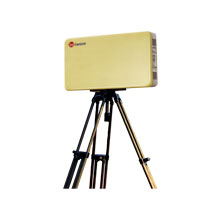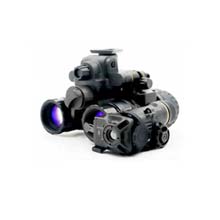3 Ways to Use Thermal Camera for Troubleshooting HVAC/R

As the demand for efficient heating, ventilation, air conditioning, and refrigeration (HVAC/R) systems continues to rise, it has become increasingly important for technicians to have the right tools for troubleshooting and maintenance. One of the most useful tools is the thermal camera, also known as an infrared camera. This device can detect temperature differences and provide a visual representation of heat patterns, making it an essential tool for identifying issues with HVAC/R systems. In this article, we will explore three ways to use a thermal camera for troubleshooting HVAC/R systems. See what kind of thermal camera can be used in HVAC/R.
1. Detecting Air Leaks
One of the biggest problems with HVAC/R systems is air leakage, which can lead to inefficiencies and more energy costs. Detecting air leaks in HVAC/R systems can be a daunting task, but a thermal camera can make it much easier.
To detect air leaks, you should first turn on the system and let it run for a few minutes. Next, you can use the thermal camera to scan around the ductwork, vents, and other areas where air may be escaping. The thermal camera will highlight areas where the temperature is different, indicating the presence of air leaks. Once the you have identified the problem areas, you can use sealants or other materials to plug the leaks and restore the system's efficiency.

Checking if the heating system are working properly with an InfiRay® thermal camera.
2. Checking Refrigerant Levels
Another critical aspect of HVAC/R system maintenance is ensuring that the refrigerant levels are at the appropriate level. A low refrigerant level can result in reducing efficiency, increasing energy costs, and even system failure. Traditionally, technicians used gauges to check the refrigerant levels, but this process can be time-consuming and inaccurate.
With a thermal camera, checking refrigerant levels is much easier and more accurate. The thermal camera can detect the temperature differences between the evaporator and condenser coils, indicating whether the refrigerant level is too high or too low. If the refrigerant level is too low, the thermal camera will show a warmer spot on the evaporator coil, while a too high refrigerant level will cause a cooler spot on the condenser coil.
Using a thermal camera to check refrigerant levels not only saves time but also ensures accuracy, leading to better system performance and lower energy costs.

With the InfiRay thermal camera you can find out the temperature of the air conditioning outlet
3. Identifying Electrical Issues
Electrical issues can cause significant problems for HVAC/R systems, causing system failure or even safety hazards. Identifying electrical issues can be challenging, as they may not be visible to our naked eyes. However, a thermal camera can detect temperature differences caused by electrical issues, making it an essential tool for identifying potential problems.
To identify electrical issues, the technician should first turn off the system and let it cool down. Next, they should use the thermal camera to scan the electrical components, such as the motor, switch, and wiring. If the thermal camera detects a hot spot in any of these components, it could indicate a potential electrical issue. The technician can then further investigate and repair the issue before it becomes a more significant problem.

Guess which piece of electrical wiring has gone wrong?
Overall, the thermal camera is a versatile and valuable tool for troubleshooting HVAC/R systems. By using a thermal camera for detecting air leaks, checking refrigerant levels, and identifying electrical issues, technicians can save time, ensure accuracy, and achieve better system performance. Learn More About Thermographic Camera in HVAC of Buildings.

















